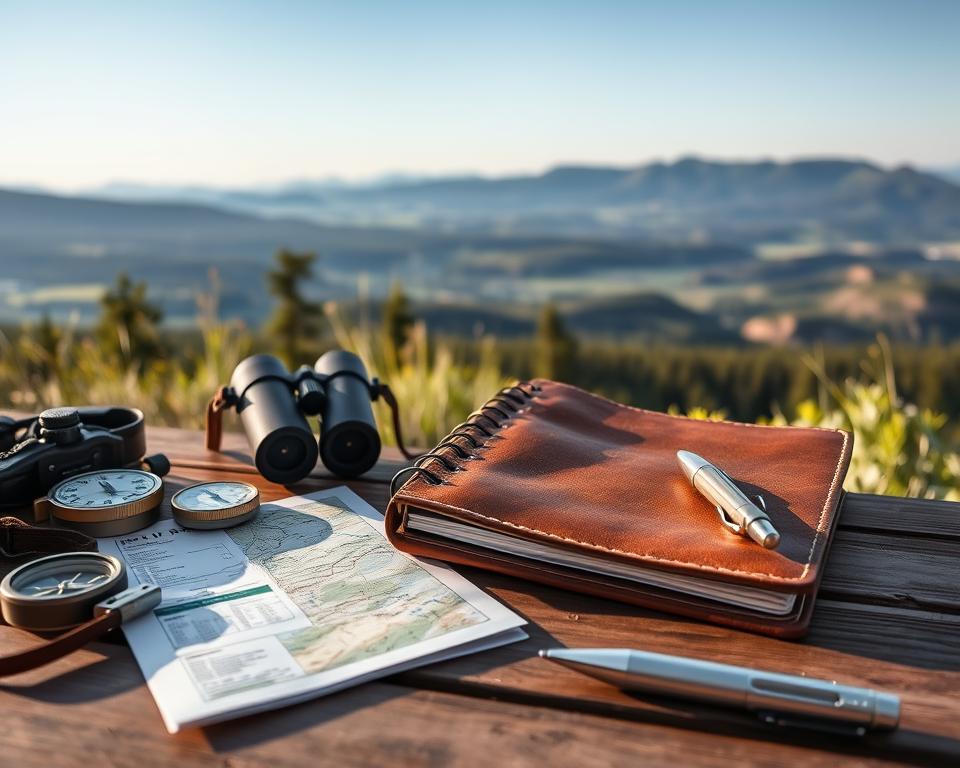Anúncios
The guide you choose matters right now: you want a single, trustworthy book that helps your decisions at work and on the river while honoring your judgment and limits.
What if one handbook could reduce guesswork on trips and save time when seconds matter? The 2024 The Guide’s Guide Augmented edition—572 pages and 115,000 words—packs safety, swiftwater rescue, knots, signals, evacuation, and guest experience into a practical reference for you.
Older printings (about 312 pages, 6″ x 8.5″) still deliver essential trip tips, company policies, first aid kits, and food planning if you need a compact, budget-friendly book. The ebook adds a clickable index and table of contents for fast, on-trip lookup.
You’ll learn what to check for in any book: safety sections, skills, menus, gear tables, and where to buy from a reliable store. Balance study with practice, apply insights at your pace, and consult certified instructors for technical rescue or medical training.
Introduction: why a Guides guide matters in 2025 for work, play, and safe adventures
In 2025, a practical buyer’s handbook matters because it cuts noise and gives clear steps you can use on the river or at work. This Buyer’s Guide shows what to look for in a reliable book and how editions differ, so you pick the right fit for trips and professional runs.
Anúncios
The Guide’s Guide Augmented (2024) expands safety talks, swiftwater rescue, high-water safety, knots, signals, evacuation, and food planning. The ebook and print formats balance depth and portability so you can match content to your needs.
Use this section to set expectations: this is a tool, not a cure-all. Compare table of contents, scan safety sections, and read store pages for edition, price, and stock details before buying.
- Practical value over marketing fluff
- How editions affect planning and field use
- Always pair reading with certified training for rescue and medical topics
Guides guide essentials: what “guide” means across rivers, tools, and content
A single word can cover very different things. A river professional leads guests, a printed or digital book teaches skills, and a design utility helps you structure content. Knowing which one you need prevents costly confusion when buying materials.
For example, a river guide book focuses on safety talks, swiftwater rescue, knots, signals, evacuation, and guest experience. Managers often pick books that also include liability, entertainment, and logistics because those details affect client satisfaction.
Compare items before you buy. Check the index depth, clear section headers, and practical checklists. Look for gear tables and repair-kit lists — they show the author understands field constraints.
- Decide if you need a river skills reference, a logistics planner, or a design utility like a guide guide.
- Verify safety coverage: rescue, signals, and knots.
- Choose concise or comprehensive books to match your study time and on-river access.
Comparing editions and formats: The Guide’s Guide Augmented in 2024 vs. older prints
The 2024 The Guide’s Guide Augmented is a much larger reference: 572 pages and about 115,000 words. It adds a boating skills section for formal training, four tall-tale campfire stories for crew morale, and Bill Center’s Dutch oven cooking article for practical food planning.
Older prints run about 312–316 pages (6″ x 8.5″) and focus on core skills, trip tips, company policies, first aid kit lists, and food planning. That compact layout suits quick study and budget buys.
Edition differences that matter
- Depth: 2024 adds pages and edits for clearer graphics and broader applicability.
- Content swaps: Whitewater Voyages references were removed to make the book usable across outfitters and clubs.
- Food & morale: New cooking material and tall tales add practical and cultural value on trips.
Ebook vs. print: how to choose
The ebook offers a clickable index and table of contents for fast lookups during training or on the river. A download or app copy can save time before a permit date or class.
Print wins for durability, easy marginal notes, and sharing during briefings. Check store pages for edition and date details, price, and “In Stock & Ready to Ship” cues if you need a book before training.
Safety, skills, and training: what to look for in a professional river guide book
Look for a book that pairs solid rescue principles with usable drills for real-world runs. A reliable manual gives clear, findable sections so you can prep training days and brief crews quickly.
Core topics to verify
Ensure the book covers safety talks, swiftwater rescue basics, signals, knots, and evacuation. These topics form a structured foundation for training and on-river decisions.
Guide training depth
Check for people skills, guest care, and content on minimizing liability. Those details help managers keep teams aligned and reduce burnout.
Real-world readiness
Confirm there are first aid and repair kit lists, quick-reference evacuation steps, and practical drills. Use highlighted diagrams and timed scenarios to turn information into practiced habit.
- Verify high-water safety guidance and communication protocols.
- Look for practical drills and scenarios that pair with certified training.
- Confirm chapters are up-to-date and match your company policies and trip planning needs.
Planning your trip like a pro: menus, gear lists, and logistics that actually help
Good trip planning starts with a realistic menu and a concise gear list you can rely on in the field. Use the book’s sample menus—some run up to 18 days—as a reference to map calories, variety, and prep time to your itinerary and crew size.
Food planning for multi-day trips: menus up to 18 days as a reference
Match meals to daily effort and fuel availability. Pick easy breakfasts for busy mornings and save longer-cook meals for relaxed evenings.
- Use the sample 18-day menus to rotate proteins and carbs so crews avoid menu fatigue.
- Apply Dutch oven ideas from the 2024 guide guide augmented to boost morale on longer runs.
- Pre-pack contingency meals for delays or higher exertion days.
Gear and pages that matter: using tables, lists, and clear specs on the river
Take advantage of the book’s tables for group gear, personal items, and repair kits. Build a master list that mirrors the book’s first aid and repair recommendations and then adapt it to your company standards.
- Create a simple spreadsheet or notebook that matches the book’s sections for quick offline reference.
- Mark key pages—signals, rescue checklists, and evacuation steps—so you can refresh at an eddy or during briefings.
- Plan river-day timelines with clear handoffs: breakfast, rig, safety talk, on-water segments, and camp setup.
Keep plans flexible: align menus and extra repair items with water levels, season, and remoteness so your trip stays safe and smooth.
Where to buy and what to expect: store pages, shipping, and the “download” option
Before you click buy, scan the product page for edition, stock status, and delivery timing. Confirm the date so you don’t end up with a 2005 printing when you need the 2024 Guide’s Guide Augmented updates.

Retail cues to verify on the page
Look for clear labels like “In Stock & Ready to Ship.” Note the price (for example, $35 for a 2005 print), size (6″ x 8.5″), and page count (about 312 pages).
- Check shipping terms and estimated delivery dates to meet training or trip schedules.
- Scan the details for topics included: safety, first aid kits, food planning, and company policy materials.
- Find the download option if you need immediate access—ebooks often include a clickable index and TOC for fast river lookups.
Consider buying both formats when budget allows: print for briefing tables and an ebook for quick on-water searches. Keep proof of purchase and edition notes so your company can standardize materials across crews.
Final steps before purchase
Review return policies and shipping windows. Set a reminder to check publisher updates annually so your library stays current.
Beyond the river: creative tools and “play” that expand how you guide and design
Creative tools let you shape safety talks and trip briefs so they match your team’s rhythm. You can treat layout and content as a practice field: build, test, and refine small pages before the next run.
GuideGuide is a product designers use to move past defaults and craft clear checklists, signal cards, and knot quick-references.
Pair the book’s deep procedures with a design app to make readable handouts. Then test those pages in low-stakes drills so the team learns faster and mistakes surface early.
- Use the tool to prototype a riverside signal card, then print and field-test it.
- Finalize pages offline and validate them during a training day.
- Iterate after trips: update what worked and share templates with managers.
Remember: an app is a support, not a silver bullet. Balance screen time with river time, keep cultural and guest-friendly content alive, and use structured pages to lower stress when seconds count.
Conclusion
Pick the product that matches your on-river needs and your time to practice. Choose a compact book for quick briefs or the 2024 Guide’s Guide Augmented when you need deeper boating skills, food planning, and cultural content.
Use the table of contents and index to build short practice sessions so pages become trusted skills. Schedule guide training, refresh safety talks, and align planning checklists with your managers before the season starts.
Balance reading and doing: study at home, practice on flatwater, then add complexity. Test Dutch oven recipes, confirm store and shipping timelines, and validate any digital content in the field.
Finally, consult certified instructors for technical training and commit to responsible guiding that values people, place, and play.



